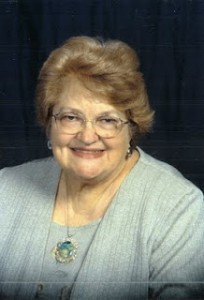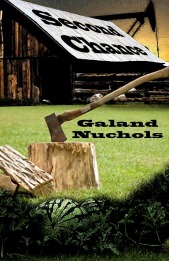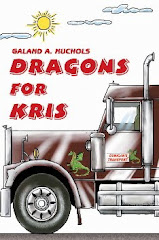Today, I have YA author Galand Nuchols, who makes me feel like I do  absolutely nothing. As I understand it, Galand, you write YA books, build houses with Habitat for Humanity, work at the food bank, conduct parenting classes, are active in your church, and take a major role in the local writers group. What do you do in your spare time?
absolutely nothing. As I understand it, Galand, you write YA books, build houses with Habitat for Humanity, work at the food bank, conduct parenting classes, are active in your church, and take a major role in the local writers group. What do you do in your spare time?
Okay. I get it; you have no spare time, so I’ll launch right into some questions.
JRC: Your first two books were set in the present time. Now, you’ve published a YA book set back around the year 1930 or so. How did you happen to pick that time?
Galand: I was still teaching when I started Second Chance. We were on a field trip to the Kilgore Oil Museum when the idea of a book came to me. I looked around at all the exhibits that showed a part of history today’s kids can’t imagine. I thought, “It would be great if all this could be woven into an exciting story for young readers. They could experience vicariously a life so different from the one kids live today.” My fictional characters of Josh, Leroy, George, and their families were created to carry the adventure part of the story. Dad Joiner and his search for oil is historical fact taken from resource books.
JRC: What came first, the title, the conflict, the characters, or something else?
Galand: Selecting a title was the very last thing and proved to be one of the hardest things about the book. I toyed with several titles but wasn’t satisfied they represented the book. One day I was editing it for the umpteenth time and read a sentence that said a certain character needed a second chance. It suddenly occurred to me that a second chance was wanted and needed by many of the characters. In real life we all need second chances. Sometimes a third and fourth chance, too. That became the title.
JRC: Interesting. With that background, tell us a little about your book, Second Chance.
Galand: In 1930 our whole country was slipping into a depression that would later be  named The Great Depression. People were without jobs, losing their homes, living in tents, and literally starving to death. It was during the era of Prohibition. Many men, including my grandfather, broke that prohibition law. They made and sold whisky in order to feed their families. It was a time of segregation: separate schools for black and white students and different social roles for blacks and whites. The Kilgore area was experiencing a terrible drought. Cotton fields couldn’t produce enough cotton to make it worth picking. Pastures were bare. Ponds and streams were dry. I tried to incorporate much of this type of thing into the background of Second Chance. Kids were freer in some ways than they are today. They had more responsibilities and worked harder, but they also played harder. Sometimes they did things that today would get them in serious trouble with the law. Some of that is in Second Chance. It was an exciting time and a dangerous time.
named The Great Depression. People were without jobs, losing their homes, living in tents, and literally starving to death. It was during the era of Prohibition. Many men, including my grandfather, broke that prohibition law. They made and sold whisky in order to feed their families. It was a time of segregation: separate schools for black and white students and different social roles for blacks and whites. The Kilgore area was experiencing a terrible drought. Cotton fields couldn’t produce enough cotton to make it worth picking. Pastures were bare. Ponds and streams were dry. I tried to incorporate much of this type of thing into the background of Second Chance. Kids were freer in some ways than they are today. They had more responsibilities and worked harder, but they also played harder. Sometimes they did things that today would get them in serious trouble with the law. Some of that is in Second Chance. It was an exciting time and a dangerous time.
JRC: And that’s about the time they discovered oil in the Kilgore area.
Galand: Yes. Dad Joiner was a real person in Kilgore and important in the discovery of oil in east Texas. I’ve put him in Second Chance.
JRC: Those early days of the oil fields sound like a fertile time and place for stories. Do you plan another YA book set in this era? Or maybe a sequel to Second Chance?
Galand: I have just submitted the sequel to Second Chance to 4RV Publishing. I hope it will be published this summer or next fall. Booming Kilgore is the working title. Lone Wolf Gonzales was a real Texas Ranger sent to Kilgore to restore law and order. So, Lone Wolf is the main historical figure in Booming Kilgore. Josh and Leroy, from Second Chance, meet him and actually see him in action. Lone Wolf is famous for his trot line in Kilgore. It was a unique way of handling the bad guys and gals in town.
JRC: I know you taught for many years. Do any of the incidents in your YA books spring from your teaching career?
Galand: Not so much from my teaching days as from stories my parents and their friends told about things they did when they were young. The cemetery escapade in Second Chance grew from a story told by one of our neighbors. His father scared the bejemmes out of him and his brother one night when they were late coming home. The brother was so scared he ran through the screen door when he got home.
JRC: As I said at the beginning, you are involved with Habitat for Humanity. Any plans for a book set amongst the Habitat community?
Galand: I’ve thought about it. It would be nice to write a book and donate the profits to our Mt. Pleasant unit. We certainly need it. I’m just not sure how to pick a problem and not embarrass Habitat International or our local unit. I’d want it to be fictional, of course, but people might think some part of it real. I’m still thinking about it though.
JRC: You’ve retired from teaching. Did you plan to write while you were still teaching? Or did this come to you after you had some free time?
Galand: I ac tually started writing Dragons for Kris while I was teaching. I had some boys that really hated to read. I started writing short, short stories using their names. They would read to see what their character did. I found out I really enjoyed writing. Dragons for Kris grew out of one of those stories.
tually started writing Dragons for Kris while I was teaching. I had some boys that really hated to read. I started writing short, short stories using their names. They would read to see what their character did. I found out I really enjoyed writing. Dragons for Kris grew out of one of those stories.
JRC: Do you outline? Do you make up character bios?
Galand: The first couple of books, I made up the bios and problems as I went. Cause and effect so to speak. What would happen next? What would Kris think or do? The book I’m working on now, Target, I pretty much know, or at least think I know, what is going to happen, and what kind of people my characters are. I have it written down and I’m making notes as I go. These are things I’ve learned from conferences and talking with experienced authors.
JRC: What’s your best advice to new writers?
Galand: Write. If you think you want to write, start writing. I encourage people to write down the verbal stories passed down in the family. Some are serious stories, some funny, some tragic. They are all stories that are important to the family’s next generations and will be lost as time passes if they’re not written down. Medical information needs to be included. Who died of what, their age, etc. Doctors are always asking for this kind of information. As the older generations die, the kids and grandkids don’t know for sure what their medical history includes. It needs to be written down.
The main thing is to get started writing something.
JRC: There you have it, folks. If Galand can find time to write with her schedule, we all can. No more excuses about not having enough time. Pick up that pencil, or poise your fingers over the keyboard – and start. Today.

Jim, Galand, I loved this interview. Thank you for taking the time to encourage writers as well as reminding us of our history and how rich of a heritage we all come from. Augie
Galand, In so many ways it sounds like Second Chance is very timely and should “speak” to today’s kids. Another thing that struck me was the short stories you wrote using students’ names in them. What a wonderful idea!
Thank you so much for sharing.
I liked Galand’s comment about how kids in the Depression played harder. It took me back to my mom’s and aunt’s memories of playing in the Marshalltown, Iowa cemetery. They had few toys, no gizmos, and were quite comfortable playing there. And why not? Now I am intrigued to read Galand’s book.
Galand!
Wonderful interview. Teachers everywhere should pick up on your method of writing short stories and using students as characters in order to get them interested in reading. That’s a fabulous idea!
I love that you work Texas, especially east Texas history into your books. Kids everywhere should enjoy reading about Texas in such a great format.
~Ann
Galand’s new book, which is now in the editing process and hopefully will be out later this year, is Leroy’s Chance, a sequel to Second Chance. Galand definitely has a way of getting into the minds and lives of her characters. Now, if we can just get more time to finish this second “chance” novel.
So nice to meet Garland Nuchols. Yes, Jim, I too get the feeling I’m idling away my time when I read of determined, organized people (writers) who don’t waste a moment of their precious days. It’s very inspiring. Garland deserves much success with you work – writing and otherwise.
Great interview! Thank you. We learn so much from these interviews– writers have the best imaginations and some have a lot of motivation to do good, too. Makes me strive to be a better person.
Marta
Galand, I have a question for you. What kind of vitamins do you take?
But, seriously, I think your involvement in Habitat for Humanity and all the other charitable work you do is admirable. And, to top it off, you write!
“Second Chance” sounds like a wonderful book. I wish you many sales!
Despite all our time-saving devices, we too often make the excuse of not having time. Galand provides the example–if there’s something you want (emphasize want) to do, you’ll find the time.